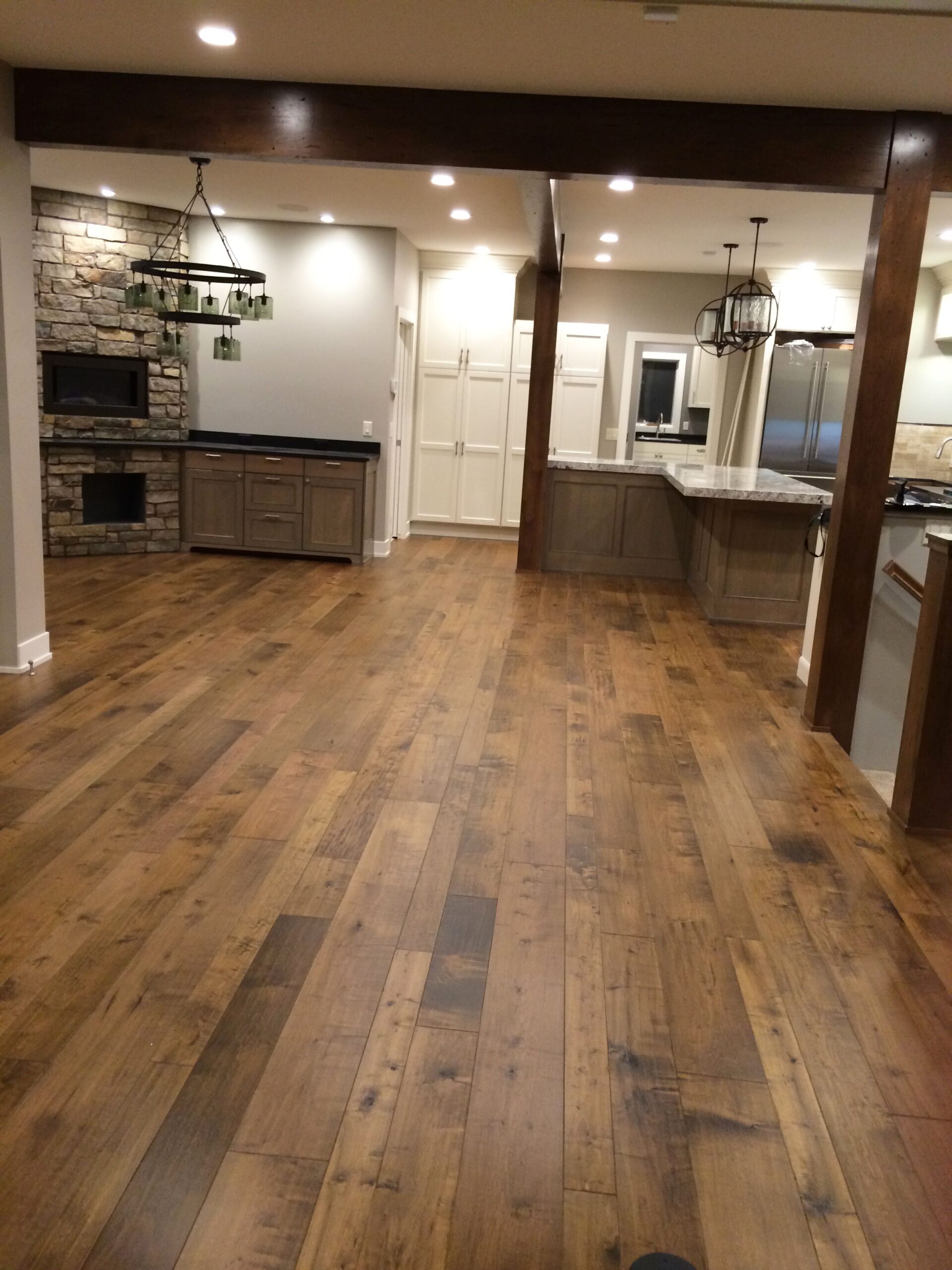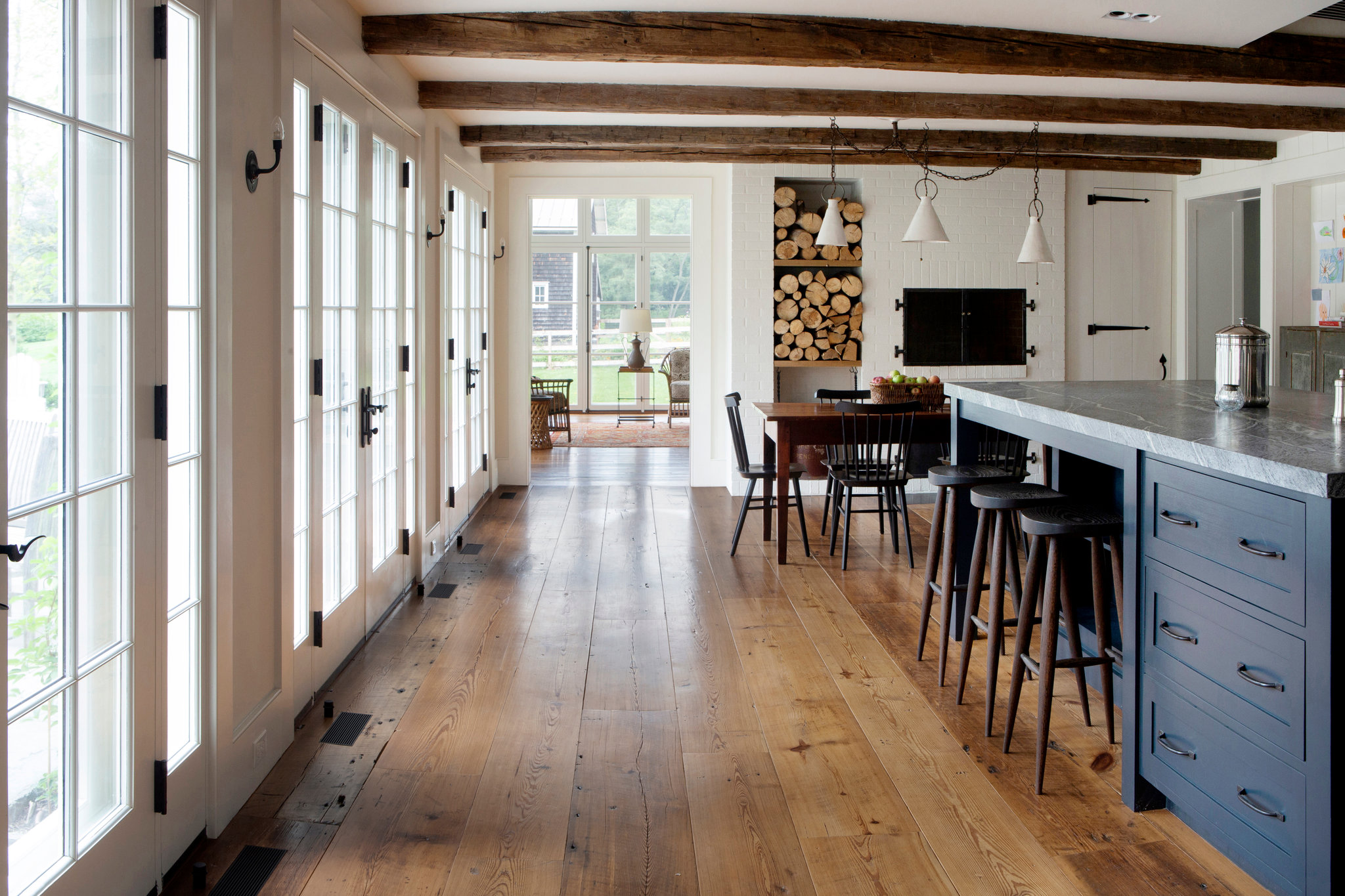Wood floors are making a comeback for a variety of reasons. In an increasingly high-tech world, popular culture reacts by opting for natural materials. This has led to an explosion in wood and stone floors as well as affordable alternatives. Wood has the added advantage of being environmentally friendly. Let’s learn more about the advantages and disadvantages of wood floors. We’ll also discuss the newest innovations in wood flooring that address some of these issues.
The Advantages of Wood Flooring
Wood floors are one of the few flooring options that may last as long as your home. You may stain, wax and finish the floors every few years, but the point is that they can last for years. This gives wood floors a good value proposition despite their higher initial cost compared to carpet or tile. This is why wood floors are associated with luxury and upscale homes.
Wood floors are one of the most hygienic options available. Carpets act like a massive air filter, trapping dirt, pet dander, pollen and mold in their weave. They’ll also trap fumes, as any smoker can tell you. Wood floors don’t trap these substances, and they can be quickly swept when there is a mess.
Wood floors handle abuse well, as long as it is well-maintained. Waxing a floor can prevent the wear and tear from wearing down the wood underneath.
Wood floors can sit on top of floor heating systems. Nor will the wood floor become freezing if the under-floor heating system is turned off.
The Disadvantages of Wood Flooring
Wood floors age. Oak floors may fade to a familiar grey, but other woods will change color without gaining an attractive patina. The solutions range from buying engineered wood treated with UV protection to keeping the windows closed so the sunlight doesn’t ruin your floors. Note that this is less of an issue if you have modern window treatments that limit UV light entering your home.
Wood floors don’t handle water well. Engineered wood floors are more water-resistant than traditional wood floors. On the other hand, laminate wood floors may be nearly as water-proof as tile and linoleum floors. Know how well the floor resists water before you have it installed. This determines how long you have to clean up spills, though you’re probably going to have to replace the floor after a severe flood no matter what type of wood floor you have installed.
Wood floors allow sound to carry, though it doesn’t echo the way tile will. Furthermore, the wood floors can be a source of noise in their own right. You’ll hear people walking on it, and it may creak as it expands and contracts due to temperature changes.
Observations about Wood Flooring
Engineering wood floors are arguably more sustainable than traditional wood floors, because it uses plywood in addition to slices of newly felled wood. Yet both types of wood floors require wood to be harvested from forests. One can argue that wood floors like these give forests economic value and guarantee that the trees will be replanted. Laminate wood floors are arguably more environmentally friendly. Laminate flooring that merely resembles wood may be made from recycled materials, and it can probably be recycled. Laminate floors containing wood layers use less wood than traditional alternatives.




















